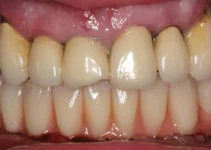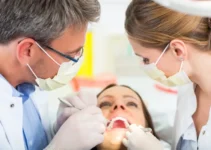Sleep apnea, a common sleep disorder characterized by frequent interruptions of breathing during sleep, can result in significant health issues if left untreated. Effective management typically involves lifestyle changes, medical devices, or sometimes surgery, depending on the severity of the condition. This article explores the various approaches that can help alleviate the symptoms of sleep apnea, offering an insight into practical solutions to restore quality sleep and improve overall health.
Understanding Sleep Apnea
Sleep apnea is a common yet often undiagnosed sleep disorder that can have significant impacts on your overall health. Understanding the causes, types, and treatments of sleep apnea is essential for managing its symptoms and improving your quality of life. Proper diagnosis and intervention can mitigate many of the potential complications associated with this condition.
People with sleep apnea experience repeated interruptions in their breathing during sleep. These interruptions can last for a few seconds to minutes and may occur multiple times per hour. Because of these breathing disruptions, sleep apnea sufferers often experience poor quality sleep, which can lead to daytime fatigue, mood disturbances, and other health issues.
Several risk factors can increase the likelihood of developing sleep apnea, including obesity, age, gender, and genetic predispositions. Treatment options vary widely, from lifestyle changes and oral appliances to more advanced solutions like Continuous Positive Airway Pressure (CPAP) therapy and surgical interventions.
What is Sleep Apnea?
Sleep apnea is a serious sleep disorder characterized by pauses in breathing or periods of shallow breathing during sleep. These pauses can last from a few seconds up to a minute and can occur 30 times or more in an hour. When normal breathing resumes, it can be accompanied by a loud snort or choking sound, causing fragmented and poor-quality sleep.
The most noticeable symptoms of sleep apnea include loud snoring, choking or gasping during sleep, and excessive daytime sleepiness. However, because these symptoms occur during sleep, many sufferers are unaware of their condition. Therefore, partner observations often play a crucial role in identifying sleep apnea. Having sleep apnea not only affects sleep quality but can also have significant long-term health consequences. Untreated sleep apnea can lead to severe conditions like hypertension, heart disease, stroke, diabetes, and depression. It is essential to seek medical advice if you suspect you have sleep apnea to mitigate these risks and improve overall well-being.
Types of Sleep Apnea
Sleep apnea can be classified into three primary types: Obstructive Sleep Apnea (OSA), Central Sleep Apnea (CSA), and Complex Sleep Apnea Syndrome. Each type has different causes and treatment protocols, making accurate diagnosis critical for effective management.
- Obstructive Sleep Apnea (OSA): This is the most common form of sleep apnea and occurs when the muscles in the throat relax excessively during sleep, leading to a physical blockage of the airways. Risk factors include obesity, large neck circumference, and certain anatomical features like enlarged tonsils.
- Central Sleep Apnea (CSA): Unlike OSA, CSA is not caused by a physical blockage but by the brain’s failure to send appropriate signals to the muscles that control breathing. This type is less common and is often associated with underlying health conditions such as heart failure and stroke.
- Complex Sleep Apnea Syndrome: Also known as treatment-emergent central sleep apnea, this type is a combination of OSA and CSA. It may develop when OSA is treated with CPAP therapy, leading to the emergence of CSA symptoms.
Each type of sleep apnea requires a different approach for management and treatment. It is crucial to undergo a comprehensive evaluation by a sleep specialist, which often includes a polysomnography test or a home sleep apnea test, to determine the specific type and severity of sleep apnea.
Understanding the type of sleep apnea you have is the first step towards effective treatment. Customized treatment plans, lifestyle modifications, and continuous monitoring are key components in managing this sleep disorder successfully.
Interested in learning more? Explore our other articles on sleep disorders, their effects on health, and the latest treatments to stay informed and proactive about your well-being.
Medical Treatments for Sleep Apnea
Sleep apnea is a serious condition characterized by repeated interruptions in breathing during sleep. These interruptions can lead to fragmented sleep and low levels of oxygen in the blood, which can have significant health consequences. Fortunately, there are several effective medical treatments that can help manage this condition. Among the most common are Continuous Positive Airway Pressure (CPAP) therapy and the use of oral appliances.
Each of these treatments offers distinct advantages and can be tailored to the needs of individual patients. Understanding the options available can help patients make informed decisions about their care and improve their overall quality of life. In the following sections, we will explore these two primary treatments in more detail.
Continuous Positive Airway Pressure (CPAP) Therapy
CPAP therapy is considered the gold standard treatment for moderate to severe obstructive sleep apnea. This therapy involves wearing a mask over the nose and/or mouth that is connected to a machine. The machine delivers a continuous stream of air, which helps keep the airways open during sleep. This prevents the episodes of apnea that disrupt sleep and allows for a more restful night.
There are several benefits to using CPAP therapy, including:
- Significantly reducing the number of apnea episodes per night.
- Improving overall sleep quality and thus boosting daytime alertness.
- Lowering the risk of related health issues such as hypertension, heart disease, and stroke.
However, CPAP therapy can come with some challenges. Some patients may find the mask uncomfortable or find it difficult to get used to the sensation of continuous airflow. Regular follow-ups with a healthcare provider can help troubleshoot these issues and improve compliance with therapy.
Oral Appliances
For patients with mild to moderate sleep apnea, especially those who may not tolerate CPAP well, oral appliances can be an effective alternative. These devices are worn in the mouth like a sports mouthguard or an orthodontic retainer while sleeping. They work by repositioning the lower jaw and tongue to keep the airway open.
There are several types of oral appliances, all designed to be custom-fitted to the patient’s mouth to ensure maximum comfort and effectiveness. The benefits of using oral appliances include:
- Portability and ease of use compared to CPAP machines.
- Increased comfort, which can lead to better compliance.
- Effectiveness in reducing apnea symptoms in many patients.
One significant consideration with oral appliances is that they should be fitted by a dentist specializing in sleep medicine to ensure they are safe and effective. Regular follow-ups are also necessary to adjust the fit as needed and monitor the patient’s progress.
Both CPAP therapy and oral appliances have been shown to be highly effective in treating sleep apnea, improving not only sleep quality but also overall health. Patients should work closely with their healthcare providers to choose the treatment that is most suitable for their condition and lifestyle.
Interested in learning more about sleep apnea and its treatments? Explore our other articles to discover additional insights and stay informed about your health.
Lifestyle and Home Remedies
Addressing sleep apnea or reducing its symptoms can often be achieved through certain lifestyle changes and home remedies. Focusing on managing your weight, altering your sleeping position, and avoiding substances like alcohol and tobacco can significantly improve your condition. Incorporating these practices into your daily routine can lead to a better quality of sleep and overall health.
These adjustments not only contribute to relieving sleep apnea but also promote a healthier lifestyle. Understanding and implementing these strategies are vital steps toward mitigating the impact of sleep apnea and enhancing your well-being.
Weight Management
Maintaining a healthy weight is a crucial factor in reducing the severity of sleep apnea. Excess weight, particularly around the neck, can obstruct your airways and make breathing during sleep more difficult. Studies have shown that even a modest weight loss can improve sleep apnea symptoms significantly.
Here are some essential steps to manage your weight effectively:
- Adopt a balanced diet rich in fruits, vegetables, whole grains, and lean proteins.
- Engage in regular physical activities like walking, swimming, or cycling.
- Limit the intake of high-calorie, sugary, and fatty foods.
- Stay hydrated by drinking plenty of water throughout the day.
Not only will these habits help you lose weight, but they will also enhance your overall health and well-being. Always consult a healthcare provider for personalized advice tailored to your specific needs.
Positional Therapy
The position in which you sleep can have a significant impact on your sleep apnea symptoms. For many individuals, sleeping on their back can cause the tongue and soft tissues to collapse to the back of the throat, leading to airway blockage. Positional therapy involves techniques and devices designed to encourage sleeping on the side rather than the back.
Some strategies for positional therapy include:
- Using special pillows that keep you in a side-sleeping position.
- Attaching a tennis ball to the back of your sleepwear to prevent rolling onto your back.
- Adjusting the elevation of your head with the help of an adjustable bed or extra pillows.
These adjustments can reduce the number of apnea episodes and improve the quality of your sleep. Experiment with different methods to find the one that best supports your breathing during sleep.
Avoiding Alcohol and Smoking
Alcohol and smoking can significantly exacerbate sleep apnea symptoms. Alcohol relaxes the muscles in the throat, increasing the likelihood of airway obstruction during sleep. It is advisable to avoid alcohol consumption, especially close to bedtime, to reduce the risk of apnea events. Smoking, on the other hand, leads to inflammation and fluid retention in the upper airway, which can worsen breathing problems. By quitting smoking, you can decrease these adverse effects and improve your airway health.
Consider the following tips to help avoid alcohol and smoking:
- Replace alcoholic beverages with non-alcoholic alternatives like herbal teas or water.
- Seek support from friends, family, or a healthcare professional to quit smoking.
- Engage in stress-relieving activities such as yoga or meditation to reduce the urge to smoke or drink.
Taking these steps can contribute to better management of sleep apnea and overall health. For more comprehensive information on improving your sleep health and additional lifestyle adjustments, explore other articles on our site.
Frequently Asked Questions About Curing Sleep Apnea
If you’re exploring ways to manage or cure sleep apnea, you might have some questions about the treatment options and their effectiveness. Here’s a commonly asked question that could help you understand more about tackling this sleep disorder.
What are the most effective treatments for sleep apnea?
The most effective treatments for sleep apnea depend on the severity of the condition. Lifestyle changes such as weight loss, quitting smoking, and sleeping on one’s side can help mild cases. For moderate to severe cases, Continuous Positive Airway Pressure (CPAP) machines are commonly prescribed to keep airways open during sleep. Additionally, oral appliances that adjust the position of the jaw and tongue can be effective. In some instances, surgical options might be considered if other treatments are not suitable or effective.

My name is Salman Kapa, a 73-year-old expert in bone regeneration and dental implantology. With decades of experience in the field, I am dedicated to advancing our understanding of oral health and hygiene. Through my research and writing, I aim to contribute to the development of innovative solutions in dental care.




